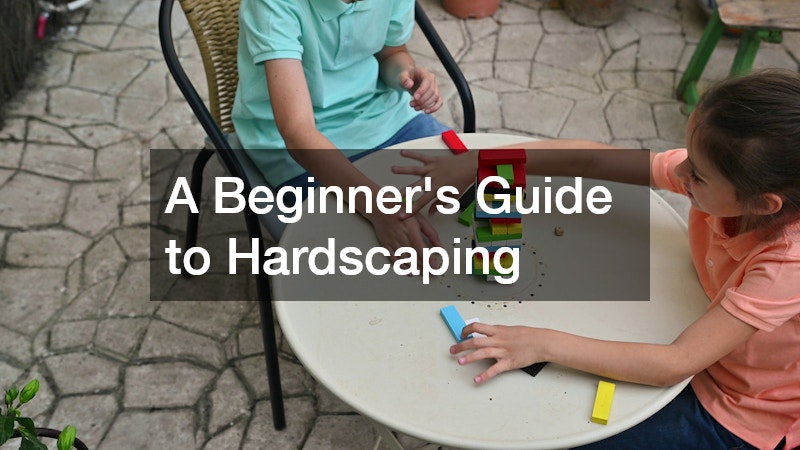Hardscaping adds structure, function, and year-round beauty to a yard by using nonliving elements like patios, walkways, retaining walls, and steps. When planned well, these features guide movement, frame planting beds, and create places to sit and gather. The key is to balance aesthetics with practicality so your space looks good and works smoothly. With a simple plan, basic material knowledge, and realistic budgeting, you can move from idea to installation with confidence.
Start With A Simple Site Plan
Begin by sketching your property, including doors, windows, utilities, slopes, and sunny or shaded areas. Mark how people already move through the yard and where you want them to go next.
Think about primary zones for dining, lounging, grilling, or play, and connect those zones with paths that feel natural. A quick plan on paper helps you right-size features, avoid awkward gaps, and reserve space for future planting.
Choose Materials That Match Use And Style
Common hardscape materials include concrete pavers, natural stone, brick, and gravel. Each offers a different look, maintenance level, and price point. Pavers are durable and uniform, which makes patterns easy to lay and repairs straightforward. Stone brings rich texture and color but can be heavier to install. Brick provides classic character and strong edges, while gravel is budget friendly for paths and utility areas. If you are unsure, a consultation with a local hardscaping company can help you compare samples on site before you commit.
Prioritize Drainage and Grading First
Water management is the backbone of a long-lasting project. Every patio or path should slope gently away from the house so rain runs off instead of pooling near foundations. Use a compacted crushed stone base to support surfaces and a setting bed appropriate to your material. Add perforated pipe or channel drains where needed to capture runoff and move it to a safe exit. Good grading protects your investment and reduces slippery spots after storms.
Size Paths and Patios for Real Life
Comfort comes from scale. Paths that are at least 36 inches wide feel easy for one person, and 48 inches or more allow two people to walk side by side. Dining patios should allow 3 feet of clearance around chairs so people can stand and move without bumping into borders. If you plan a fire pit, confirm local rules for clearances, and give each seat a stable, level spot. A brief walkthrough with a tape measure often prevents costly changes later, and a local hardscaping company can help you translate these measurements into a clean layout.
Add Edging, Steps, and Transitions
Strong edges keep gravel and pavers in place and prevent lawn creep into joints. Options include metal, concrete, or soldier-course pavers set on a sturdy base. Where grades change, add steps with consistent riser heights to make movement safe and predictable. Use landings to break up long runs and to create small moments for a bench or planter. Transitions matter as much as focal points, since they determine how comfortably you move from one area to another.
Installation Basics To Get Right
Great prep delivers great results. Excavate deep enough for base, bedding, and the finished surface, then compact in thin lifts so the base does not settle. Keep slopes consistent, check lines with a level and string, and use spacers to maintain even joints. Sweep polymeric sand into paver joints and lightly mist to lock everything in place, or use the jointing method specified for natural stone. Take your time on the foundation, since the visible layer only performs as well as what sits underneath it.
Care and Long-Term Upkeep
Hardscapes are low maintenance, but not no maintenance. Brush debris from joints, top up gravel paths when needed, and re-sand paver joints every few years. Rinse surfaces seasonally and spot treat stains quickly to prevent set-in marks. Inspect edges after freeze-thaw cycles and reset any pieces that shift. A brief seasonal checklist keeps everything tidy and extends the life of your investment. If you prefer turnkey upkeep, a local hardscaping company can schedule periodic inspections and cleanings.
Hardscaping succeeds when solid prep meets simple, thoughtful design. Start with a clear plan, choose materials that fit your style and budget, and make drainage the priority. Size paths and patios for comfort, plan utilities early, and phase work if needed to stay on track. With careful execution and a little routine care, your new space will be durable, welcoming, and easy to enjoy, whether you built it yourself or partnered with a local hardscaping company.
